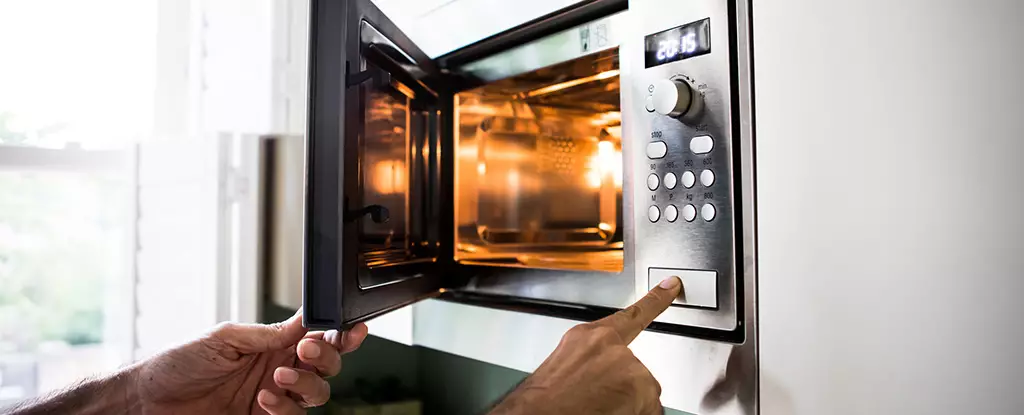Microwave ovens once epitomized a futuristic kitchen revolution, transforming how we prepare and reheat food. Yet these appliances often slip into the background of our daily lives, rarely receiving the attention they merit. A recent study sheds new light on the hidden ecosystems thriving within these devices, prompting us to reconsider our approach to kitchen hygiene. Conducted by researchers from the University of Valencia and Darwin Bioprospecting Excellence SL, the study explores the microbial colonnades that have seemingly taken residence in our microwaves, challenging previous assumptions about their cleanliness.
For many, the microwave’s fundamental utility revolves around its capacity to heat food quickly, which often leads to the misconception that it also effectively sterilizes food and surfaces within. The assumption seems logical—after all, the powerful microwaves should be enough to incinerate any lurking germs. However, this study presents a far more complex reality; some microbial inhabitants within our microwaves resist the very radiation meant to obliterate them. This revelation could shift how we perceive not only microwave hygiene but also our general relationship with microbial life.
In an effort to uncover the nature of these microwave-dwelling microorganisms, researchers meticulously swabbed the insides of thirty microwaves from three distinct environments: single-home kitchens, communal spaces such as office break rooms, and specialized laboratories. Surprisingly, diverse genera including Brachybacterium, Micrococcus, and Paracoccus emerged from all three types of microwaves. This suggests that the microbes living in microwaves are not merely incidental; they have embedded themselves into our daily lives, flourishing by utilizing residues and environmental conditions inherent to their respective settings.
The study revealed an intriguing pattern: microwaves in single-family households displayed a lower microbial diversity compared to those in shared spaces. This is likely attributed to the limited variety of contaminants present in individual kitchens versus more communal environments, which host a wider range of microbial introductions. This finding could provoke a deeper analysis of our cleaning habits and the potential need for more aggressive sanitation routines in both personal and shared cooking spaces.
Contrary to expectations, laboratory microwaves exhibited the highest microbial diversity among the three settings analyzed. They boasted Shannon diversity index scores exceeding four—indicative of a vibrant microbial community. Notably, these laboratory microwaves do not entertain the same kitchen-associated bacteria as their domestic counterparts. Instead, they serve to heat biological samples and chemical reagents, creating an environment that fosters unique microbial populations. Researchers identified certain resilient species such as Deinococcus and Kineococcus that are equipped to withstand extreme conditions—a testament to their adaptability and survival mechanisms.
Interestingly, the small-scale findings from microwaves in laboratory environments drew parallels with microorganisms found on solar panels, pointing towards a broader spectrum of study that transcends mere kitchen hygiene and delves into environmental resilience.
The implications of this research extend beyond just a checklist for kitchen cleanliness. The presence of bacteria capable of withstanding harsh treatment creates concerns about their ability to also resist common cleaning practices. As the study suggests, these findings compel us to adopt a proactive approach to maintaining hygiene in our microwaves. Regular cleaning with appropriate agents not only keeps bacteria at bay but also ensures that our appliances remain as effective as they are intended.
Understanding the microbial communities residing within microwave ovens further illuminates humanity’s complex relationship with microorganisms. As these tiny entities reclaim a space in our awareness, it becomes crucial for us to confront the implications of their presence and adapt our cleaning habits accordingly. Ultimately, this research highlights the significance of balancing our reliance on technological conveniences with diligent maintenance that promotes both personal health and the fortified integrity of our living spaces.

